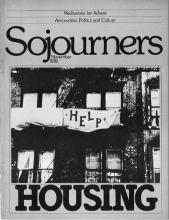In this observer's judgment, the anti-nuclear movement provides just about the best current example of what a potentially successful U.S. radical movement might look like.
I wasn't the only one who reached this conclusion during the first National "No-Nukes" Strategy Conference at the University of Louisville in August. After four days of almost non-stop discussion, others among the 300 delegates from anti-nuclear power groups around the country caught glimpses of how a renewed mass movement might operate.
It is much too early to make grandiose claims for the anti-nuclear movement.
Other movements have looked as promising and then faded. But at Louisville we saw some of the anti-nuclear movement's potential for building and sustaining a mass base.
Why do I think of the anti-nuclear movement as a model?
Because it has thus far cultivated what I consider the central, paradoxical characteristic of authentic North American insurgencies: they are both radical and conservative at the same time.
Why do I say a successful native movement must be both at once?
Because that, in my judgment, is the nature of the beast we're working with: North Americans are largely a conservative lot. They believe in hard work, fair play, paying your own way, minimum government, family stability, organized religion, and stuff like that.
But these Americans are ready to do radical things to protect such values against threats, real or imagined. That's how the Establishment has sold us the various wars we have fought. But it is also how we managed to have a revolution a while back. And North Americans have shown that they are just as ready to fight Big Business as they are Big Government (or Big Communism) if either gets in the way of their essential conservatism.
Read the Full Article

